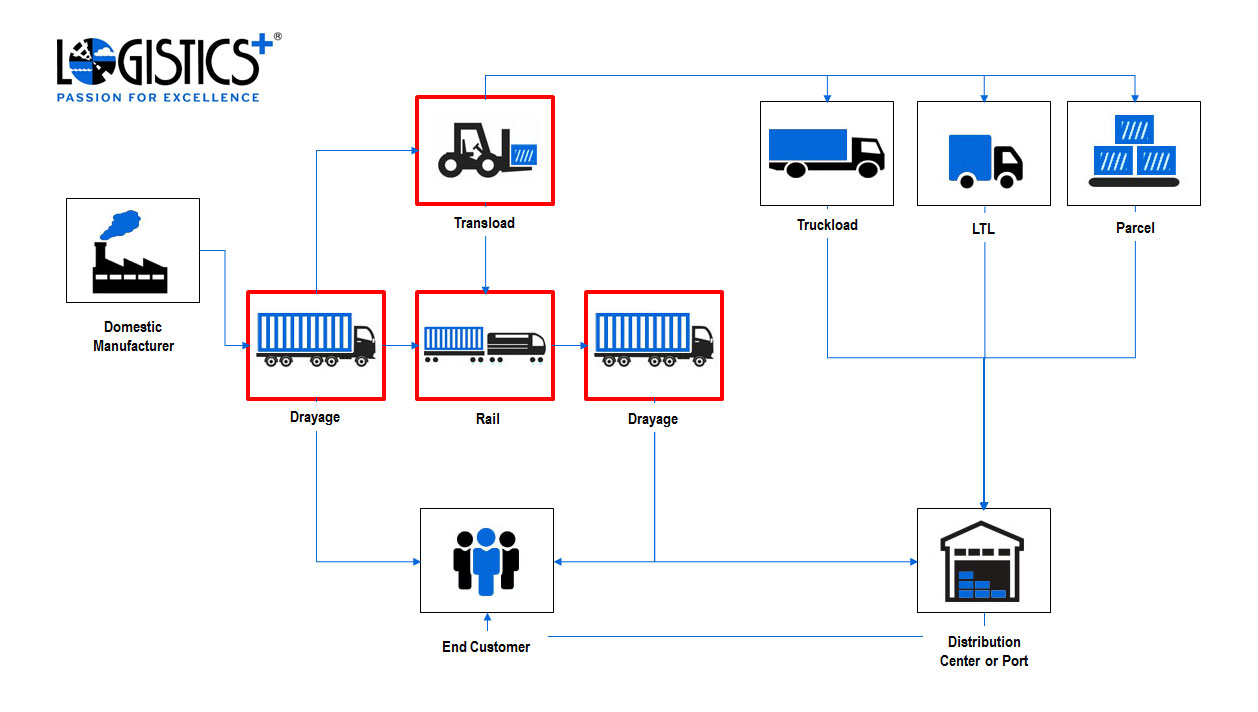 Door-to-door intermodal transportation can offer dependable, flexible and cost-effective linehaul, drayage and transloading options for large and small shippers moving products through their North American supply chains. Intermodal’s value for shippers is driven by use of multiple, coordinated and highly-managed transportation and distribution services to achieve reliable, lower cost, optimized distribution. Achieving full intermodal optimization requires organizations to effectively integrate these various moving pieces into an efficiently managed supply that includes:
Door-to-door intermodal transportation can offer dependable, flexible and cost-effective linehaul, drayage and transloading options for large and small shippers moving products through their North American supply chains. Intermodal’s value for shippers is driven by use of multiple, coordinated and highly-managed transportation and distribution services to achieve reliable, lower cost, optimized distribution. Achieving full intermodal optimization requires organizations to effectively integrate these various moving pieces into an efficiently managed supply that includes:
- On-dock activities;
- Off-dock drayage;
- Transloading based on deferred allocation instructions and final-miles mode optimization; and
- Intermodal rail origin and destination ramp drays.
When all direct and in-direct logistics expenses including railroad costs, transloading costs and benefits, and origin and destination drayage and port services are considered, substituting an door-to-door intermodal model for a more traditional (over-the-road) OTR approach offers shippers a potential savings of 5% to 35%.
Key Considerations:
- Intermodal linehaul distance; there is a direct correlation between distance shipped and savings compared to OTR achieved;
- Number of cargo or trailer handlings avoided;
- The introduction of stack trains that has doubled trainload capacity;
- Improved railroad network capacity;
- Dray distance and available dray capacity at origin and destination Rail ramps;
- Railroad infrastructure investments continue to focus on improving service and reliability;
- OTR capacity and service performance will continue to weaken for the foreseeable future due to highway congestion, new regulations, and ongoing driver shortages;
- Although not as fast as OTR, intermodal rail does offer regular scheduled and reliable transit times that provide good predictability within the supply chain;
- Intermodal results in reduced fuel consumption and reduced emissions per ton of freight moved over a like distance; and
- Intermodal safety performance is better than OTR.
The inclusion of intermodal should be considered as a key component a shipper’s domestic or North American supply chain strategy. With competitive and reliable transit times, an increasing geographic reach and compelling opportunities to reduce costs while improving optimization, intermodal offers an attractive value proposition. To take full advantage of door-to-door intermodal solutions, an active management approach to optimize and coordinate each interdependent component of the intermodal supply chain is critical and should be undertaken only with a capable and experienced logistics partner that can offer:
- Origin loading designed to enable advance or deferred multi-channel cargo allocations;
- Off-dock terminal drayage;
- Chassis and transload container management;
- Transloading and drayage to rail ramps;
- Access to intermodal rail;
- DC/warehouse drayage from destination rail ramp; and
- Door-to-door pricing and visibility.
Is door-to-door intermodal right for your supply chain? There’s a strong chance that intermodal can, in fact, play an important part in your transportation mix by finding the right service provider for your operations.

